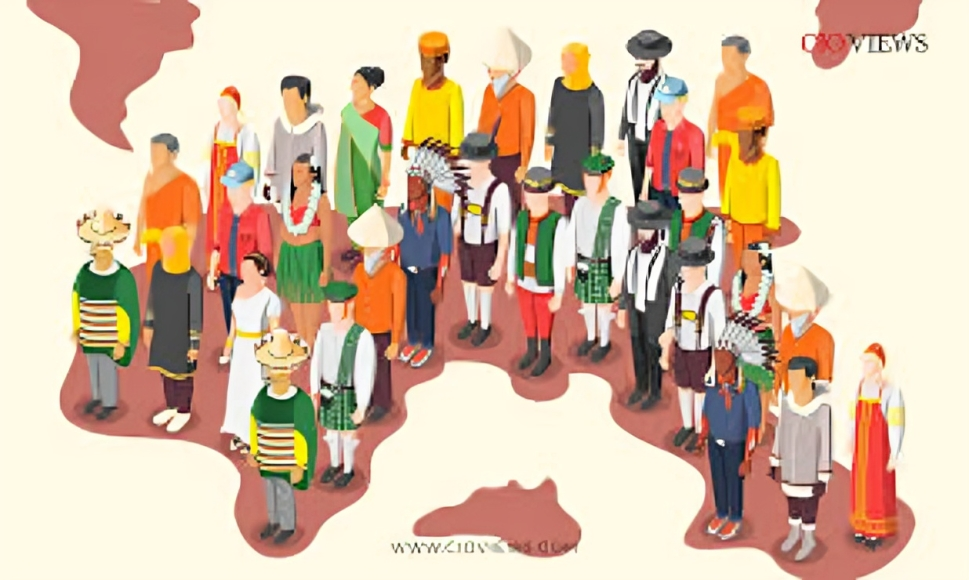Introduction to the concept of cultural diversity and its importance
Welcome fellow culture enthusiasts! Prepare to embark on a captivating journey through the vibrant tapestry of global traditions. In a world as diverse as ours, cultural richness abounds, offering an intricate mosaic of beliefs, customs, and practices that shape societies worldwide. Join us as we delve into the essence of cultural diversity and explore the beauty it brings to our lives. Let’s celebrate the uniqueness that each corner of the globe has to offer – let’s embrace culture in all its colorful glory!
The beauty of cultural traditions around the world
The beauty of cultural traditions around the world is akin to a mesmerizing tapestry woven with threads of history, beliefs, and creativity. Each tradition is like a vibrant brushstroke on the canvas of humanity, adding depth and richness to our global identity.
From the intricate henna designs in India to the rhythmic Maori haka dance in New Zealand, every culture offers a unique glimpse into its soul through its customs and rituals. The colorful costumes of Carnaval in Brazil or the graceful tea ceremonies in Japan are just a few examples of how diverse and fascinating cultural practices can be.
These traditions are not merely relics from the past; they are living expressions that evolve over time while staying rooted in heritage. They connect us to our ancestors and guide us towards understanding ourselves better by embracing where we come from.
Exploring these cultural gems allows us to appreciate the diversity that makes our world so enchanting and helps foster respect for others’ ways of life.
Examples of unique and fascinating cultural practices from different countries
Let’s embark on a journey across the globe to explore some truly captivating cultural practices that have been passed down through generations. In Japan, the art of tea ceremony, known as Chanoyu or Sado, is a harmonious ritual that celebrates tranquility and mindfulness.
Heading over to India, we encounter the vibrant festival of Holi where people come together to celebrate the arrival of spring by throwing colored powders in the air. It’s a joyous occasion filled with music, dance, and laughter.
In Ireland, the ancient tradition of storytelling or “seanchaí” continues to thrive as storytellers mesmerize audiences with tales of folklore and mythology around cozy firesides.
Meanwhile, in Morocco, the intricate art of henna tattooing plays a significant role in weddings and celebrations symbolizing good luck and protection.
These are just a few examples showcasing the richness and diversity of cultural traditions around our world.
How these traditions are passed down through generations
Cultural traditions are like threads woven into the fabric of society, connecting generations past with those to come. Within each tradition lies a story, a meaning that is carefully passed down from elders to the young. Whether through oral storytelling, ceremonial rituals, or artistic expressions, these practices hold the essence of a community’s identity.
The act of passing down cultural traditions is not merely a transfer of knowledge; it is a sharing of values and beliefs that foster unity and understanding among family members and communities. It creates a bridge between the past, present, and future, ensuring that heritage remains alive and vibrant.
Through observing and participating in these age-old customs, younger generations learn respect for their roots and gain a deeper appreciation for diversity. This transmission process strengthens bonds within families while also preserving the unique cultural heritage for posterity.
The impact of globalization on cultural diversity
Globalization has undeniably connected the world in unprecedented ways, allowing for the exchange of ideas, goods, and information across borders. While this interconnectedness brings about numerous benefits, it also poses a threat to cultural diversity. As Western ideals permeate different societies through media and technology, traditional practices and beliefs are at risk of being overshadowed or even lost.
The spread of fast food chains and global brands often leads to a homogenized consumer culture that erases local traditions. Additionally, languages spoken by smaller communities may face extinction as dominant languages become more prevalent worldwide. The pressure to conform to mainstream norms can marginalize minority cultures struggling to preserve their heritage in the face of globalization’s influence.
However, amidst these challenges lie opportunities for cultural exchange and mutual understanding on a global scale. By embracing diversity and actively seeking out unique traditions from around the world, we can enrich our own perspectives and contribute to the preservation of cultural authenticity in an increasingly interconnected world.
Challenges faced by minority cultures in preserving their traditions
Preserving cultural traditions is a delicate dance between the past and the present, especially for minority cultures facing unique challenges in today’s rapidly changing world. One of the main obstacles these communities encounter is the threat of cultural appropriation, where elements of their traditions are misunderstood or exploited by mainstream society. This can lead to dilution or misrepresentation of their rich heritage.
Moreover, globalization brings with it homogenizing influences that can erode the distinctiveness of minority cultures. As technology advances and communication barriers break down, there is a growing concern that traditional practices may be overshadowed by more dominant cultural norms.
In addition, economic pressures often force minority communities to prioritize financial stability over cultural preservation. The need to adapt to modern ways of living sometimes comes at the expense of passing down age-old customs and rituals to future generations.
Despite these challenges, many minority cultures resiliently fight to safeguard their traditions through education, advocacy, and community engagement initiatives. By raising awareness and celebrating diversity in all its forms, we can help ensure that these invaluable heritage treasures continue to thrive for years to come.
Ways to celebrate and appreciate cultural diversity in our daily lives
Embracing cultural diversity in our daily lives can be a truly enriching experience. One way to celebrate and appreciate different cultures is by exploring their culinary traditions. Trying out new dishes from around the world can open up your taste buds to a whole new world of flavors and ingredients.
Another way to immerse yourself in cultural diversity is through music and dance. Whether it’s learning a traditional dance or attending a live music performance, you can feel the rhythm of different cultures pulsating through your veins.
Art is also a powerful medium for connecting with diverse cultures. Visiting art exhibitions, galleries, or participating in craft workshops can expose you to the unique artistic expressions of various communities.
Engaging in conversations with people from different backgrounds is key to understanding and appreciating their culture. By listening to their stories, beliefs, and experiences, we can foster mutual respect and empathy towards one another.
By actively seeking out these opportunities for cross-cultural engagement, we not only broaden our horizons but also contribute towards building a more inclusive and harmonious society.
Conclusion: Why it is important to embrace and protect global diversity
Embracing and protecting global diversity is crucial in preserving the rich tapestry of cultural traditions that make our world so vibrant and colorful. By celebrating the uniqueness of each culture, we not only honor the past but also pave the way for a more inclusive and understanding future.
As we navigate an increasingly interconnected world, it is essential to recognize and respect the differences that define us. By valuing cultural diversity, we can create a more harmonious society where every tradition is cherished and every heritage is respected.
So let’s continue to explore, appreciate, and safeguard the beauty of global culture. Let’s embrace our differences as strengths rather than barriers. Together, we can create a world where diversity thrives, traditions endure, and unity prevails.











